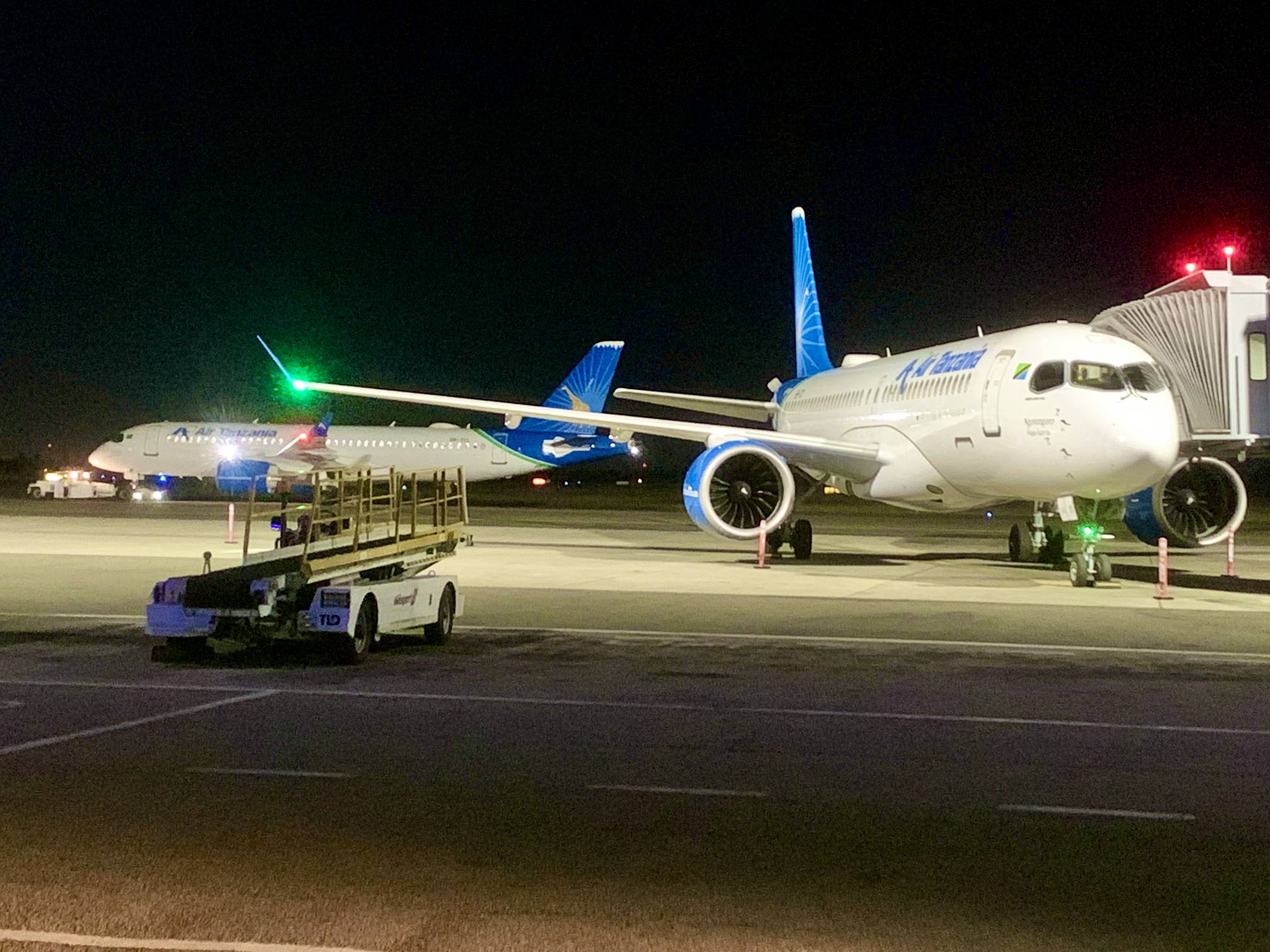
East African carrier Air Tanzania has no timeline for the resolution of technical problems that affect the Pratt & Whitney engines on its four Airbus A220-300s. The carrier announced a “temporary suspension” of some of its services due to the issues. Engine woes ground most of Air Tanzania’s Airbus A220s.
In a public notice on November 10, Air Tanzania (ATCL) alerted customers to service disruption because of challenges they were facing with “maintenance” some of their PW1524G-3 powered A220s. “To ensure continued to our customers, we shall reduce the number of flights to match aircraft availability. This decision is temporary as our technical teams work in accordance with recommendations by the manufacturer,” the carrier said.
The airline didn’t reveal the number of aircraft that are affected and the extent of schedule disruption. Checking the fleet status, AirInsight learned that one A220 last flew on January 3 and has been parked at Maastricht Aachen Airport in The Netherlands. A second aircraft last flew on August 27 and is in Dar Es Salaam, as is a third A220 since November 5. Only one A220 (registration 5H-TCI) is currently in regular service.
Problem not limited to Air Tanzania
Speaking to AirInsight, Chief Executive Officer, Ladislaus Matindi, did not delve into the exact nature of the problems but confirmed that they had faced technical issues with the powerplants. He also said the carrier did not have a definite indicator from Pratt & Whitney, of when these would be resolved because “we are still far down in the manufacturers’ queue for repairs.”
“Until the engines are in the repair shop, we cannot know exactly when we shall get relief. And because this problem is not particular to Air Tanzania but applies to all operators of the GTF, there are not even enough spare engines to keep us going as the affected engines visit the repair shop,” Matindi said.
As reported by AirInsight in August, PW1500G and PW1900G engines are subject to extra inspections following two Airworthiness Directives (AD) in January and July. The first requires the removal and replacement of the High-Pressure Turbine (HPT) 1st and 2nd stage disks. This follows an incident on an International Aero Engines V2500 engine on an Airbus A321ceo. The newer Pratt & Whitney PW1500G (Airbus A220) and PW1900G (Embraer E2-series) share parts with similar materials.
The July AD covers the same two engines and was originally issued in 2021 after inflight shutdowns on two Airbus A220s. This was traced to a software problem and the compressor intermediate case (CIC). P&W responded with an update of the full authority digital electronic control (FADEC) software and a redesign of the compressor intermediate case. Yet, FAA and EASA require repetitive borescope inspections and replacement of the LPC rotor 1 to continue.
As Matindi says, the problem affects all operators of the PW1500G as well as the PW1900G. According to information from P&W in a press statement on the certification of the Embraer E190-E2 in China, 280 aircraft with these engines are currently in service. In August and again last week, lessor AerCap expressed its concern that new-technology engines need to come off the wing much earlier than anticipated. This forces engine makers to prioritize new engines for in-service aircraft, which adds to the supply chain constraints and deliveries for newly-built aircraft.
In a statement to AirInsight, Pratt and Whitney say: “Commercial aviation is seeing a strong rebound, especially in the single-aisle segment. Like many in the industry, we have experienced supply chain challenges with structural castings and other parts. We continue to work on mitigation strategies with our supply base and expect pressures to begin to ease in 2023, which will support both our OE and MRO output plans.”
Air Tanzania was the African launch customer for the A220 and Matindi says as such, they were psychologically prepared for a “few technical” problems. However, technical glitches aside, the A220 had been a superb platform that has more than delivered on its promise of lower fuel burn, and had given the carrier “significant savings,” at a time of high prices for aviation fuel.
(additional reporting by Richard Schuurman)




Great piece!